I have a app that is locked to portrait in all views except one that is AllButUpsideDown. The approach i am using is to enable Portrait, Landscape Left and Landscape Right in the targets general settings menu. Then have subclasses of UINavigationController and UITabBarController that override func supportedInterfaceOrientations() -> UIInterfaceOrientationMask and returns .Portrait.
Then in my view controller that needs to be able to be rotated I have also overridden func supportedInterfaceOrientations() -> UIInterfaceOrientationMask and returns .AllButUpsideDown. This works fine since this view controller is only presented as a modal i.e aViewController.presentViewController().
All of this work as expected on iOS9 on iOS8 however if i close the rotatable view controller while in landscape the UI will be scaled to landscape altho it will be displayed in portrait.
Anyone know what to do about this? Am I approaching this rotation thing wrong from the start? Any clean fixes? Workarounds? Hacks?
UPDATE
My problem originated from me using a custom transition to present and dismiss the view controller that could rotate. I tried to work around it for some time with bunch of different solutions. The closest I got to a solution was to use a separate UIWindow for my rotatable view controller, that worked except a issue with the carrier bar still being in the wrong orientation, and that was something I did not manage to solve.
The solution(not really a solution) I went with was to only use the custom transition in iOS9+ and on iOS8 use the default present transition.
